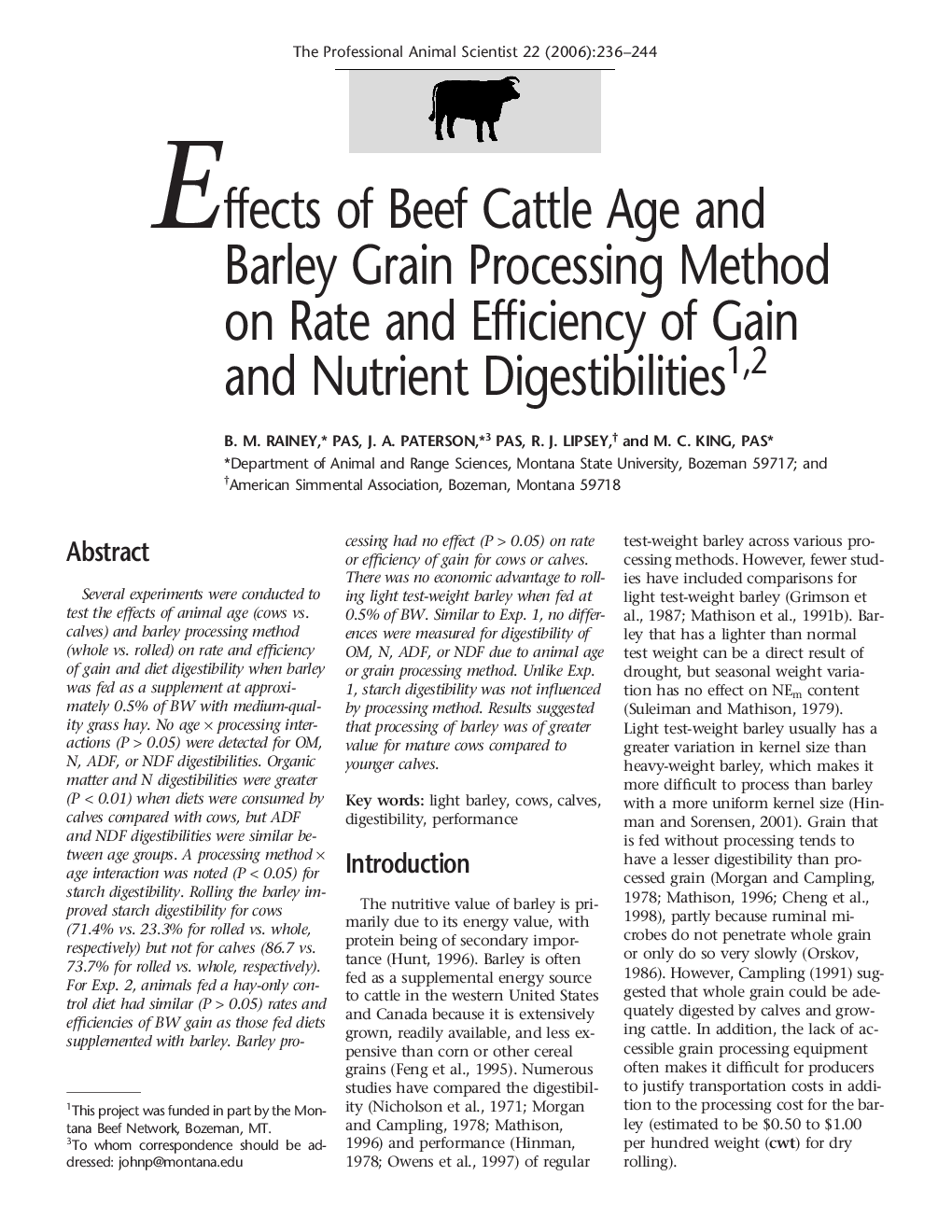| Article ID | Journal | Published Year | Pages | File Type |
|---|---|---|---|---|
| 2454586 | The Professional Animal Scientist | 2006 | 9 Pages |
Abstract
Several experiments were conducted to test the effects of animal age (cows vs. calves) and barley processing method (whole vs. rolled) on rate and efficiency of gain and diet digestibility when barley was fed as a supplement at approximately 0.5% of BW with medium-quality grass hay. No age à processing interactions (P > 0.05) were detected for OM, N, ADF, or NDF digestibilities. Organic matter and N digestibilities were greater (P < 0.01) when diets were consumed by calves compared with cows, but ADF and NDF digestibilities were similar between age groups. A processing method à age interaction was noted (P < 0.05) for starch digestibility. Rolling the barley improved starch digestibility for cows (71.4% vs. 23.3% for rolled vs. whole, respectively) but not for calves (86.7 vs. 73.7% for rolled vs. whole, respectively). For Exp. 2, animals fed a hay-only control diet had similar (P > 0.05) rates and efficiencies of BW gain as those fed diets supplemented with barley. Barley processing had no effect (P > 0.05) on rate or efficiency of gain for cows or calves. There was no economic advantage to rolling light test-weight barley when fed at 0.5% of BW. Similar to Exp. 1, no differences were measured for digestibility of OM, N, ADF, or NDF due to animal age or grain processing method. Unlike Exp. 1, starch digestibility was not influenced by processing method. Results suggested that processing of barley was of greater value for mature cows compared to younger calves.
Keywords
Related Topics
Life Sciences
Agricultural and Biological Sciences
Animal Science and Zoology
Authors
B.M. (PAS), J.A. (PAS), R.J. Lipsey, M.C. (PAS),
